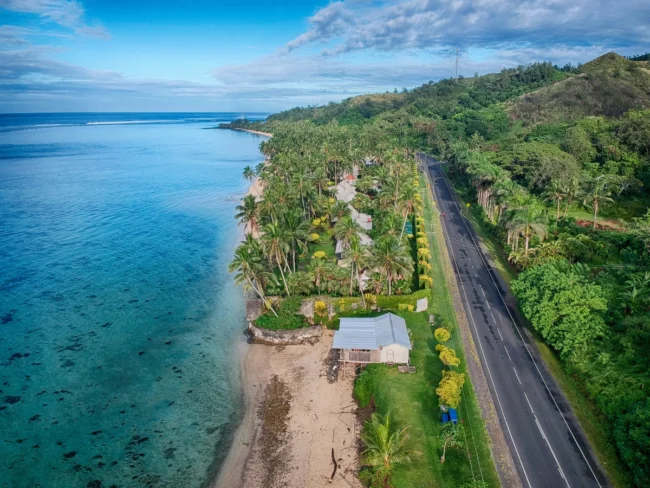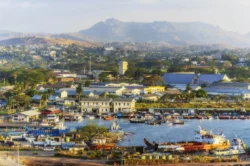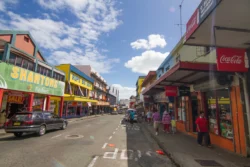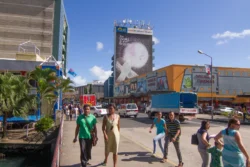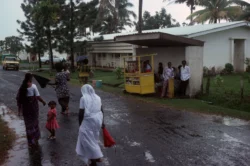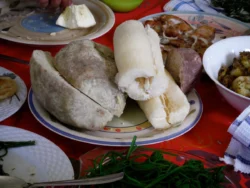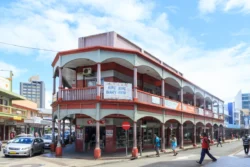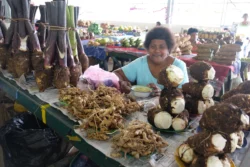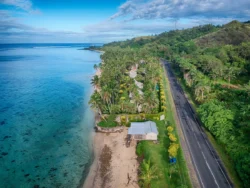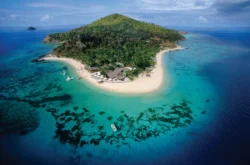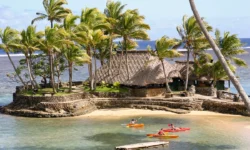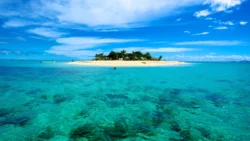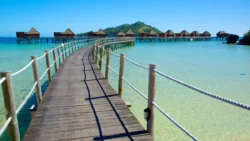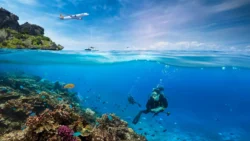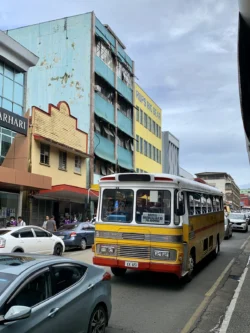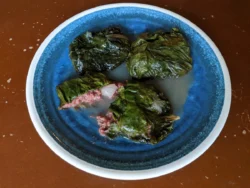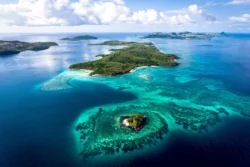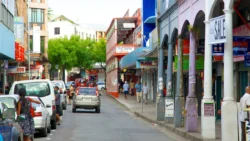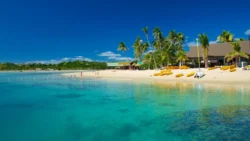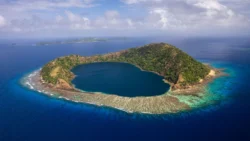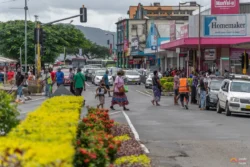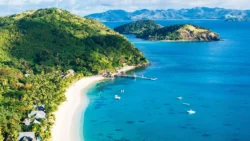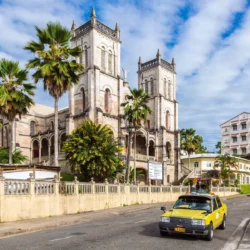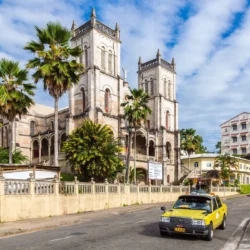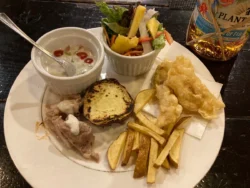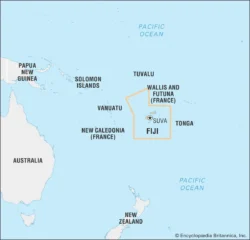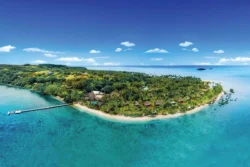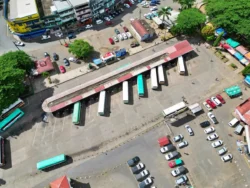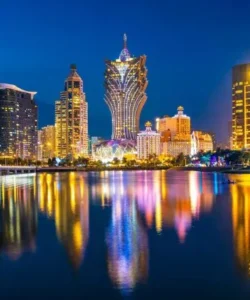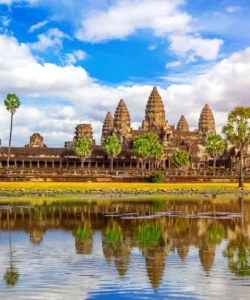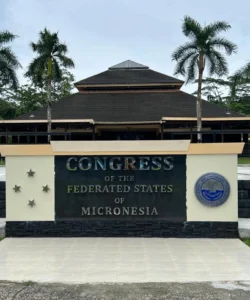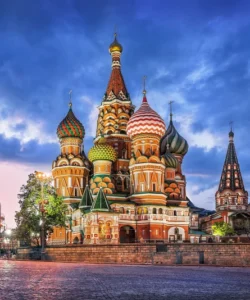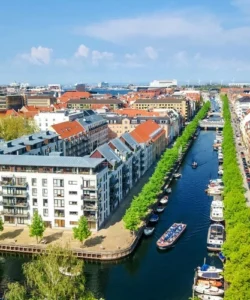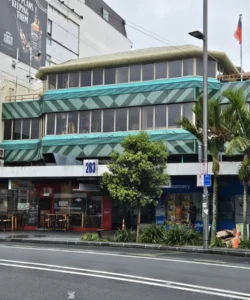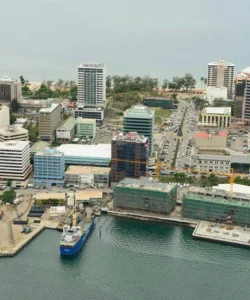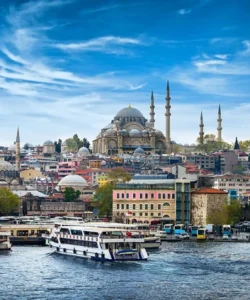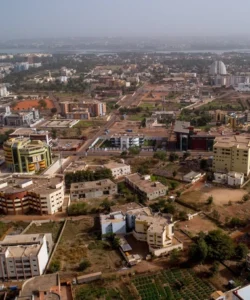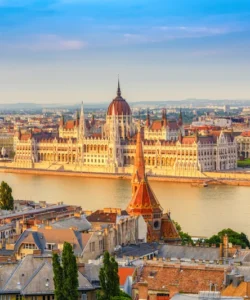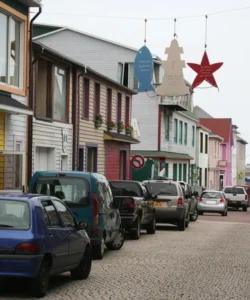Fiji is an island country in Melanesia, part of Oceania, located in the South Pacific Ocean. It’s an archipelago of more than 300 islands, famous for its idyllic white-sand beaches, clear turquoise waters, lush tropical landscapes, and warm, welcoming culture often referred to as “Fiji Time.” It’s a premier destination for honeymoons, family holidays, and adventure tourism, particularly diving and snorkeling.
Here’s a comprehensive overview:
- Area: Approximately 18,272 km² (7,055 sq mi). Viti Levu and Vanua Levu are the two largest islands, accounting for about 87% of the total land area.
- Population: Estimated at around 947,947 people as of July 2025. The population is a mix of indigenous Fijians (iTaukei) and Indo-Fijians (descendants of Indian indentured laborers), along with other smaller ethnic groups.
- Language: The official languages are Fijian, Fijian Hindi, and English. English is widely used in government, business, and tourism.
- Currency: Fijian Dollar (FJD).
- Religion: Predominantly Christian (Methodist and Catholic being largest denominations), with a significant Hindu and Muslim population, reflecting the Indo-Fijian community.
- Capital: Suva (located on Viti Levu).
- Major Cities/Towns: Suva, Nadi (main international airport hub), Lautoka (second largest city), Labasa, Savusavu.
Attractions & Wonders:
Fiji’s appeal lies in its stunning natural beauty and opportunities for relaxation and adventure.
- Beaches & Islands:
- Mamanuca Islands: A popular group of islands just off Nadi, famous for their resorts, pristine beaches, and excellent snorkeling, diving, and water sports. Home to iconic spots like Castaway Island and Cloudbreak (a world-renowned surf break).
- Yasawa Islands: A more remote and rugged chain of islands, offering beautiful beaches, traditional village experiences, and the famous Sawa-i-Lau Caves (limestone caves with freshwater pools).
- Denarau Island: Connected to the mainland by a short causeway near Nadi, this man-made island is home to a concentration of major international resorts, golf courses, and a marina.
- Coral Coast (Viti Levu): A stretch of coastline on Viti Levu known for its resorts, coral reefs, and cultural villages.
- Underwater World: Fiji is often called the “Soft Coral Capital of the World” due to its incredibly vibrant and healthy soft coral gardens. World-class diving and snorkeling opportunities abound, with abundant marine life, diverse reef systems, and warm waters.
- Sawa-i-Lau Caves (Yasawa Islands): Ancient limestone caves with cool, clear freshwater pools, accessible by swimming through an underwater passage. A significant cultural site.
- Bouma National Heritage Park (Taveuni): Located on the “Garden Isle” of Taveuni, this park features lush rainforest, stunning waterfalls (Tavoro Waterfalls), and excellent hiking trails.
- Garden of the Sleeping Giant (Nadi, Viti Levu): A beautiful orchid garden showcasing a vast collection of Fiji’s native orchids and other tropical plants.
- Sri Siva Subramaniya Swami Temple (Nadi, Viti Levu): A colorful and intricately carved Hindu temple, one of the largest in the Southern Hemisphere.
- Pacific Harbour (Viti Levu): Known as Fiji’s “Adventure Capital,” offering activities like shark diving, whitewater rafting, and zip-lining.
- Cloudbreak (Mamanuca Islands): A legendary left-hand surf break, attracting surfers from around the world.
Architecture:
Fijian architecture reflects a blend of traditional indigenous design, colonial influences, and modern resort aesthetics.
- Traditional Fijian (Bure): The bure is a traditional Fijian thatched hut, often built with local timber and natural materials, designed for the tropical climate. Many resorts incorporate modern versions of bures for guest accommodation. Traditional village bures are still functional and culturally significant.
- Colonial Architecture (Suva, Levuka): In cities like Suva and the historic town of Levuka (a UNESCO World Heritage site), you can find well-preserved colonial buildings from the 19th and early 20th centuries, reflecting British influence with large verandahs, elevated structures, and tropical adaptations.
- Resort Architecture: Modern resorts blend contemporary design with elements of traditional Fijian architecture, creating spacious, open-plan structures that maximize views and airflow.
Roads:
Fiji’s main islands (Viti Levu and Vanua Levu) have decent road networks, particularly the Queens Road and Kings Road which circle Viti Levu.
- Queens Road (Viti Levu): The primary sealed highway connecting Nadi, the Coral Coast, Pacific Harbour, and Suva. Generally in good condition.
- Kings Road (Viti Levu): Less developed than Queens Road, but improving.
- Rural Roads: Many roads outside of major routes can be unsealed, gravel, or prone to damage from heavy rains, especially in remote areas.
- Driving Conditions: Fijians drive on the left side of the road. While navigating is relatively easy, be aware of speed limits, local driving habits, and potential for livestock on rural roads.
Hotels:
Fiji offers a wide spectrum of accommodation, from luxurious private island resorts and international chains to family-friendly resorts, boutique hotels, and budget guesthouses.
- Luxury & Private Islands:
- The Brando (Tetiaroa, technically French Polynesia but similar ultra-luxury eco-resort concept often associated with Fiji’s high end): Correction – The Brando is in French Polynesia. For Fiji:
- The Laucala Island Resort: Ultra-luxury, all-inclusive private island resort.
- Kokomo Private Island Fiji: High-end, family-friendly private island resort.
- Likuliku Lagoon Resort (Mamanuca Islands): Adults-only luxury resort with overwater bures.
- Tokoriki Island Resort (Mamanuca Islands): Adults-only, highly rated for romance.
- Mainland & Popular Islands:
- Sofitel Fiji Resort & Spa (Denarau Island, Nadi): Large, family-friendly international resort.
- Radisson Blu Resort Fiji Denarau Island (Denarau Island, Nadi): Popular family resort with multiple pools.
- Shangri-La Yanuca Island, Fiji (Coral Coast): Large, established resort with extensive facilities.
- Plantation Island Resort (Mamanuca Islands): A popular mid-range, family-friendly option.
- Many boutique resorts and guesthouses on various islands.
Restaurants:
Fiji’s culinary scene is a delicious blend of indigenous Fijian, Indian, Chinese, and international influences, with fresh seafood being a highlight.
- Resort Restaurants: Most resorts offer a range of dining options, from casual beachfront grills to fine dining, serving international and local dishes.
- Local Fijian Cuisine: Seek out authentic Fijian dishes in villages or at specialized local eateries.
- Indian Cuisine: Due to the large Indo-Fijian population, excellent Indian food (curries, rotis, savory snacks) is widely available, particularly in Nadi and Suva.
- Nadi Town & Denarau: A good concentration of restaurants, from casual to upscale.
- Suva: Offers a wider variety of ethnic restaurants and more urban dining experiences.
Cuisine:
Fijian cuisine is characterized by fresh ingredients, often cooked in a lovo (earth oven) or with coconut cream.
- Kokoda: The Fijian equivalent of ceviche, made with raw fish (often snapper or mahi-mahi) marinated in lime juice or coconut cream, with onions, tomatoes, and chilies. A national favorite.
- Lovo: A traditional feast where various foods (pork, chicken, fish, root crops like taro, cassava, kumala) are wrapped in banana leaves and cooked slowly in an underground oven heated by hot stones. Results in tender, smoky meat and vegetables.
- Taro (Dalo): A staple root crop, often boiled, mashed, or made into chips.
- Cassava (Tapioca): Another common root vegetable, prepared similarly to taro.
- Kumala (Sweet Potato): Widely consumed.
- Palusami: A dish made from taro leaves baked in coconut cream, often with corned beef or fish.
- Ika Lolo: Fish cooked in coconut cream.
- Rourou: Young taro leaves, often cooked with coconut milk.
- Fresh Seafood: Abundant, including grilled fish, prawns, and lobster.
- Curries: A wide variety of Indian-style curries, from mild to spicy, reflecting the Indo-Fijian influence.
- Tropical Fruits: Abundant fresh fruits like mangoes, papayas, pineapples, and bananas.
- Kava (Yaqona): While not food, this traditional ceremonial drink made from the root of the kava plant is culturally significant. It has a mild sedative effect and is offered as part of welcoming ceremonies.
